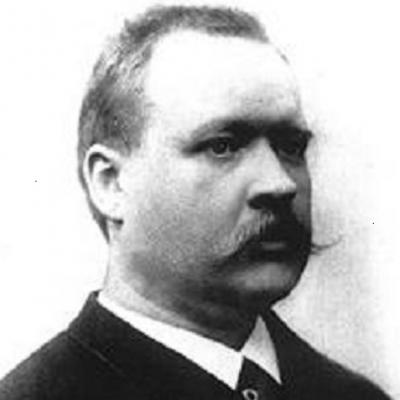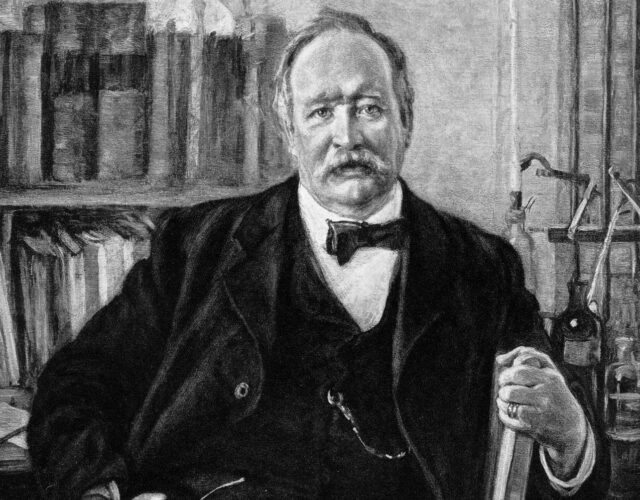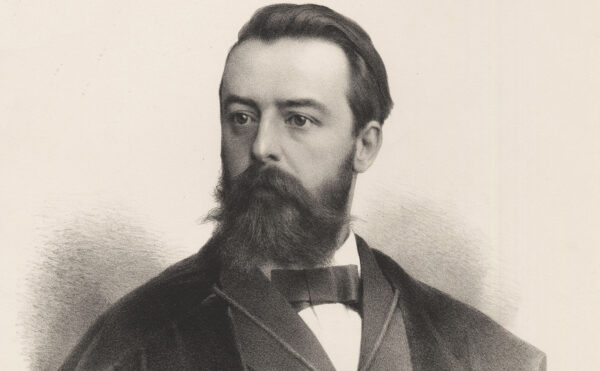The Swedish chemist Svante Arrhenius (1859–1927) is most often remembered as one of the founders of modern physical chemistry. Much of his reputation stems from his equation relating the conductivity of a solution to its temperature. His career, however, was far more expansive than either equation or title suggests, and his reputation suffered more than its share of ups and downs.

Svante August Arrhenius.
As a doctoral student at the University of Uppsala, Arrhenius observed that more dilute solutions tend to be more conductive. In his dissertation he hypothesized that salts and other compounds disassociate in aqueous solution, forming electrolytes; a more dilute solution allows for more disassociation and thus is more conductive. His dissertation was met with excitement among younger scientists on the continent, especially Wilhelm Ostwald, who encouraged Arrhenius to leave Sweden. He spent the next five years traveling and developing the theory of electrolytic disassociation. By the mid-1890s this ionic theory was generally accepted by chemists. However, his attempts to link his theories of electric charge to the moon were less successful.
Arrhenius returned to Sweden in 1891 and took a position as a lecturer of physics at the Stockholm Högskola. There he joined the Stockholm Physics Society and became enmeshed in cosmic physics, an interdisciplinary study of cosmological, atmospheric, oceanic, and geological phenomena. Arrhenius’s devotion to this nascent field—particularly his development of the concept of panspermia, the idea that life arrived on earth from spaceborn spores—caused a rift between him and his non-Scandinavian colleagues. In 1903 he was nevertheless awarded the Nobel Prize in Chemistry. As one of the earliest recipients of science’s greatest honor and a Swede, he became deeply involved in future decisions about the prize. This year marks two anniversaries that would have been of interest to this idiosyncratic scientist: the 150th anniversary of his birth, and the 40th anniversary of the first lunar landing.
1884
Completes dissertation. Arrhenius’s doctoral attempt to measure the molecular weight of cane sugar turns into a (rough) theory of electrolytic disassociation.
Mid-1890s
Tries to affirm the negative electrical charge of the moon by mapping the congruence of lunar phases and the frequency of electrical storms and auroras. Later in the decade he extends this study to physiology with an attempt to map mortality, birth rates, and menstruation onto the lunar calendar.
1895
Begins to study the effect of carbon dioxide in the air on ground temperature in response to a question on the origin of the Ice Age posed by the Stockholm Physics Society.
1901
Seeks to extend the range of physical chemistry through a study of toxins and antitoxins. Along with Danish bacteriologist Thorvald Madsen, he attempts to show that mixing tetanolysin and antitetanolysin results in a reaction analogous to that between a weak acid and a weak base.
1903
Is awarded the Nobel Prize in Chemistry for his work on the theory of electrolytic disassociation. Noting the theory’s interdiscipl-inary impact, the chemistry committee proposed to award him half the prize in physics and half in chemistry. The physics committee rejected the proposal.
1908
Publishes Worlds in the Making, a layman’s version of his unsuccessful textbook, Lehrbuch der Kosmischen Physik. A compendium of Arrhenius’s studies in cosmic physics, including his work on panspermia, Worlds was more popular in Sweden than any previously published natural science book.




